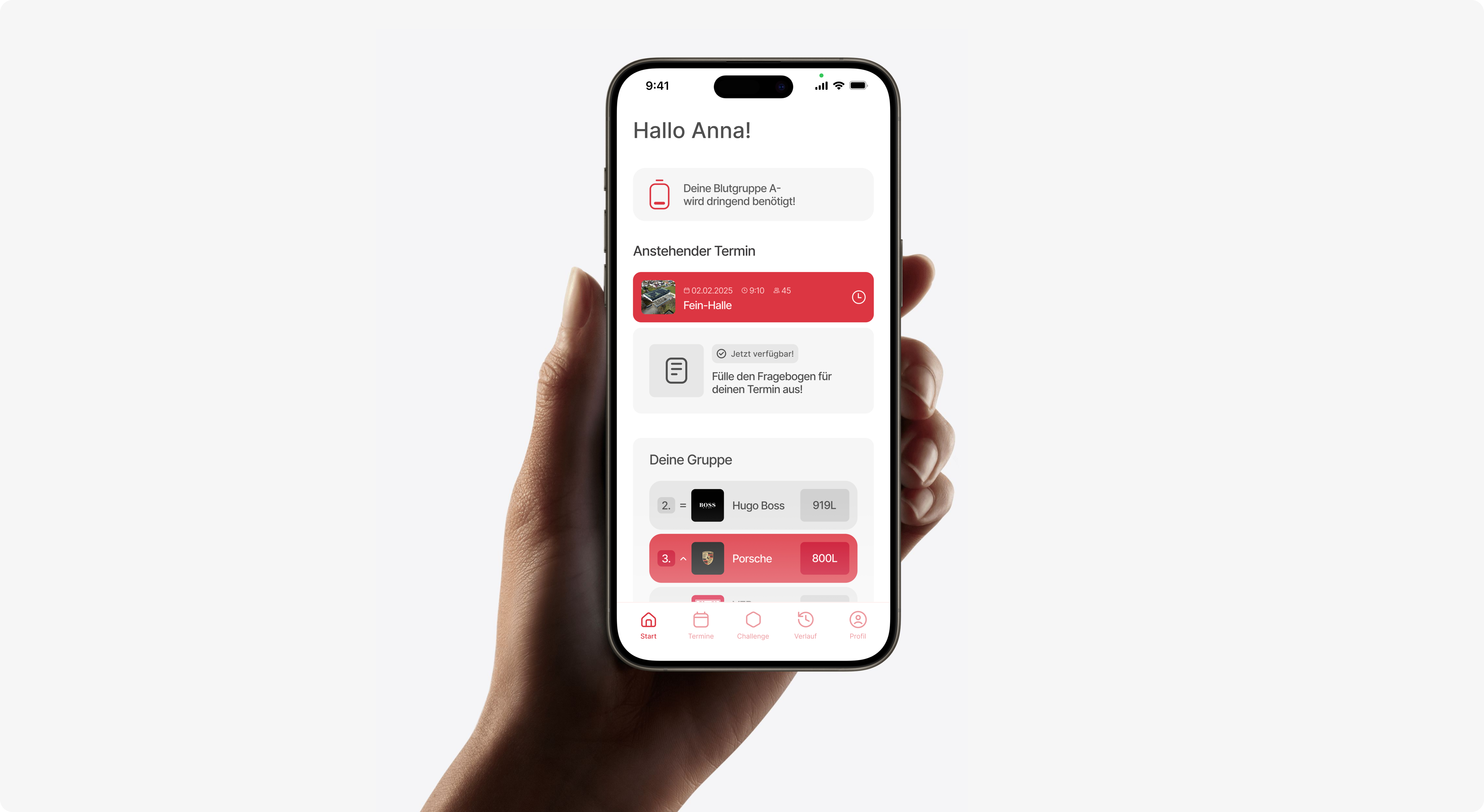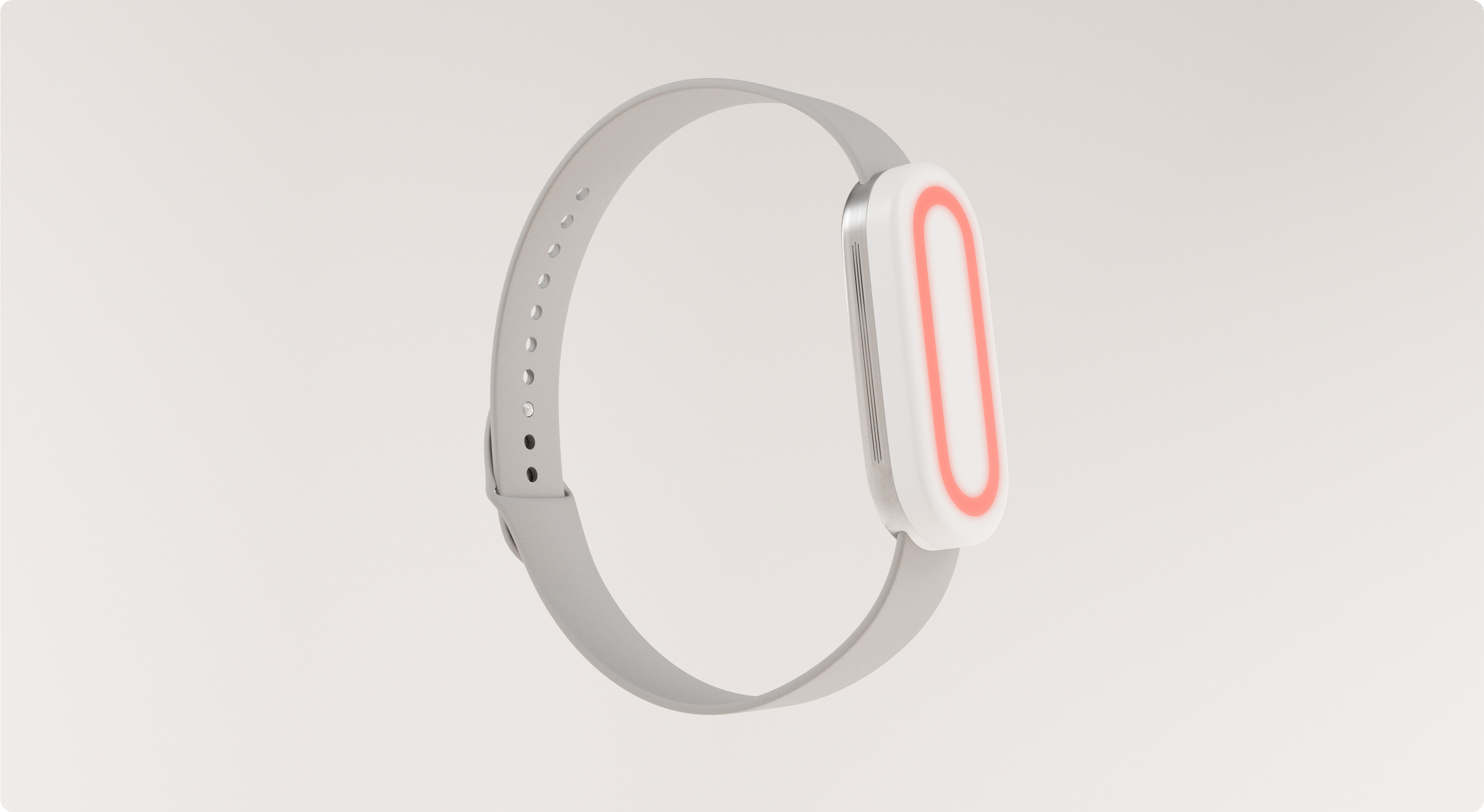alex
Emotion detection in emotionally blind people
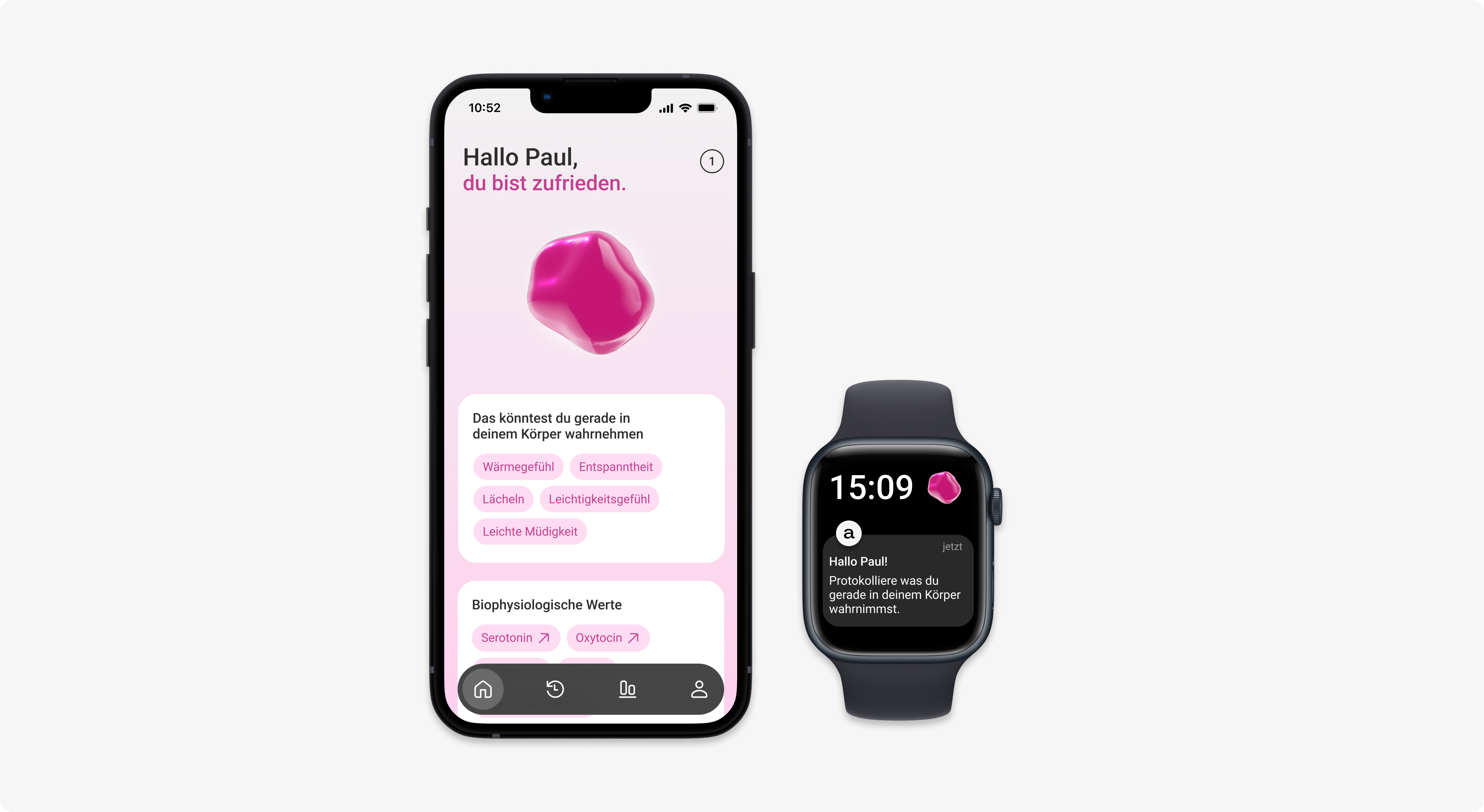
(Team)
Leon Bork
Nele Schaal
(Duration)
5 months
(Topic)
Research
Concept
Prototype
UI/UX
Around 10% of the world's population is affected by alexithymia, which means they are emotionally blind. This personality trait describes the inability or considerable difficulty in perceiving and identifying one's own emotions and putting them into words. Those affected do have feelings, but they cannot consciously grasp or verbalize them. Instead of recognizing sadness, anger or fear as emotions, they often only feel physical reactions, such as pressure in the chest or inner tension. They lack awareness of the connection between emotions and physical perceptions, which restricts them, especially when interacting with other people. That's why we designed alex, a therapy-accompanying app for smartphones and smartwatches that helps emotionally blind people to recognize seven of their emotional states and to understand and learn about them themselves in the future.
Research
Through an expert interview with a psychologist who specializes in alexithymia, we found out that therapy for those affected is primarily about imparting emotional knowledge and gradually approaching one's own feelings.
Three Stages
That is why alex introduces users to the conscious perception and allocation of their emotions in three successive stages. Each stage requires more initiative and promotes the ability to recognize and understand one's own emotional state.
(1)
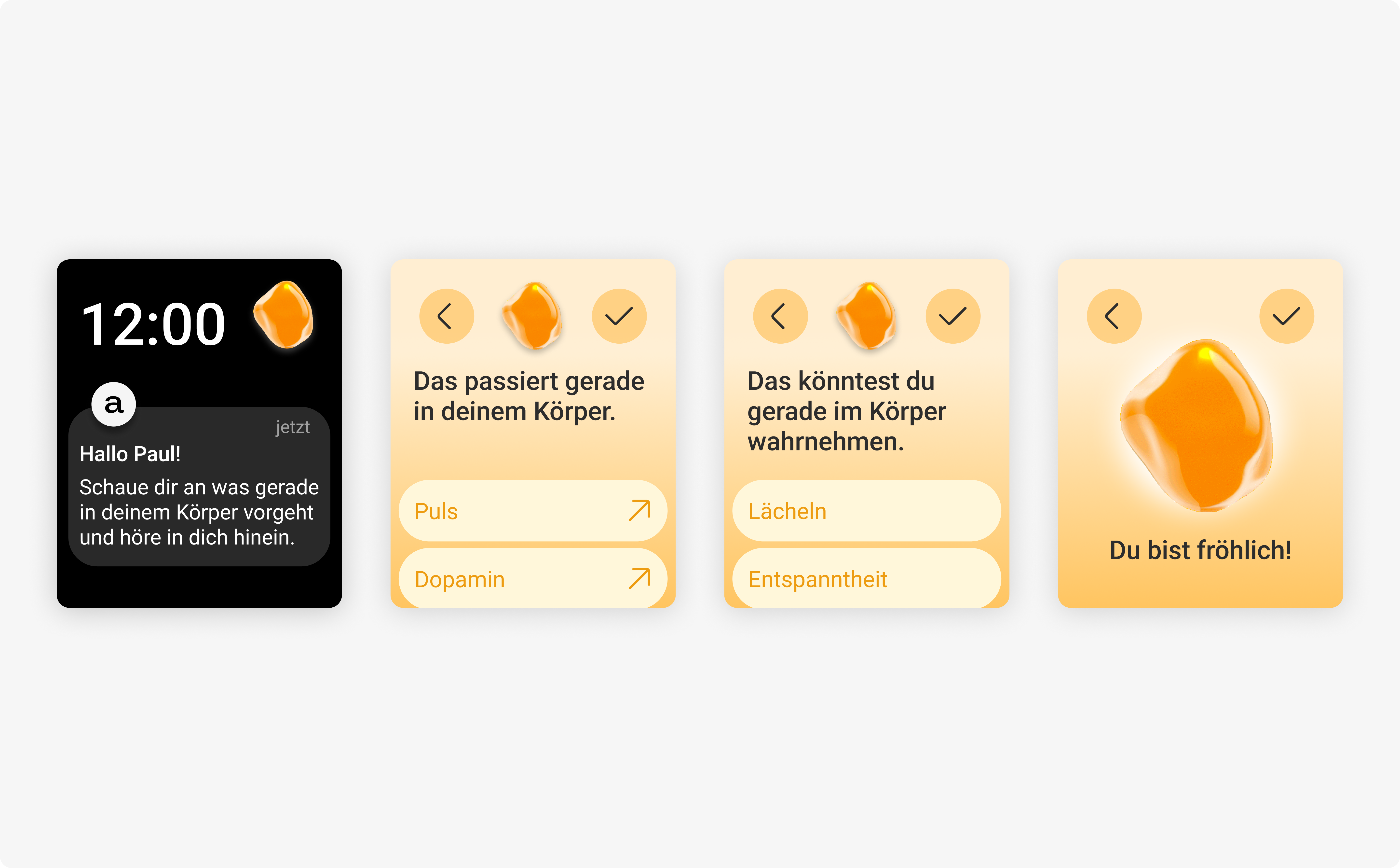
The user receives notifications to listen to themselves regularly. The smartwatch displays biophysiological changes in the body, physical sensations that could occur due to the measured emotion and the emotion measured by alex to make the person concerned aware that these processes are all interrelated and influence each other.
(2)
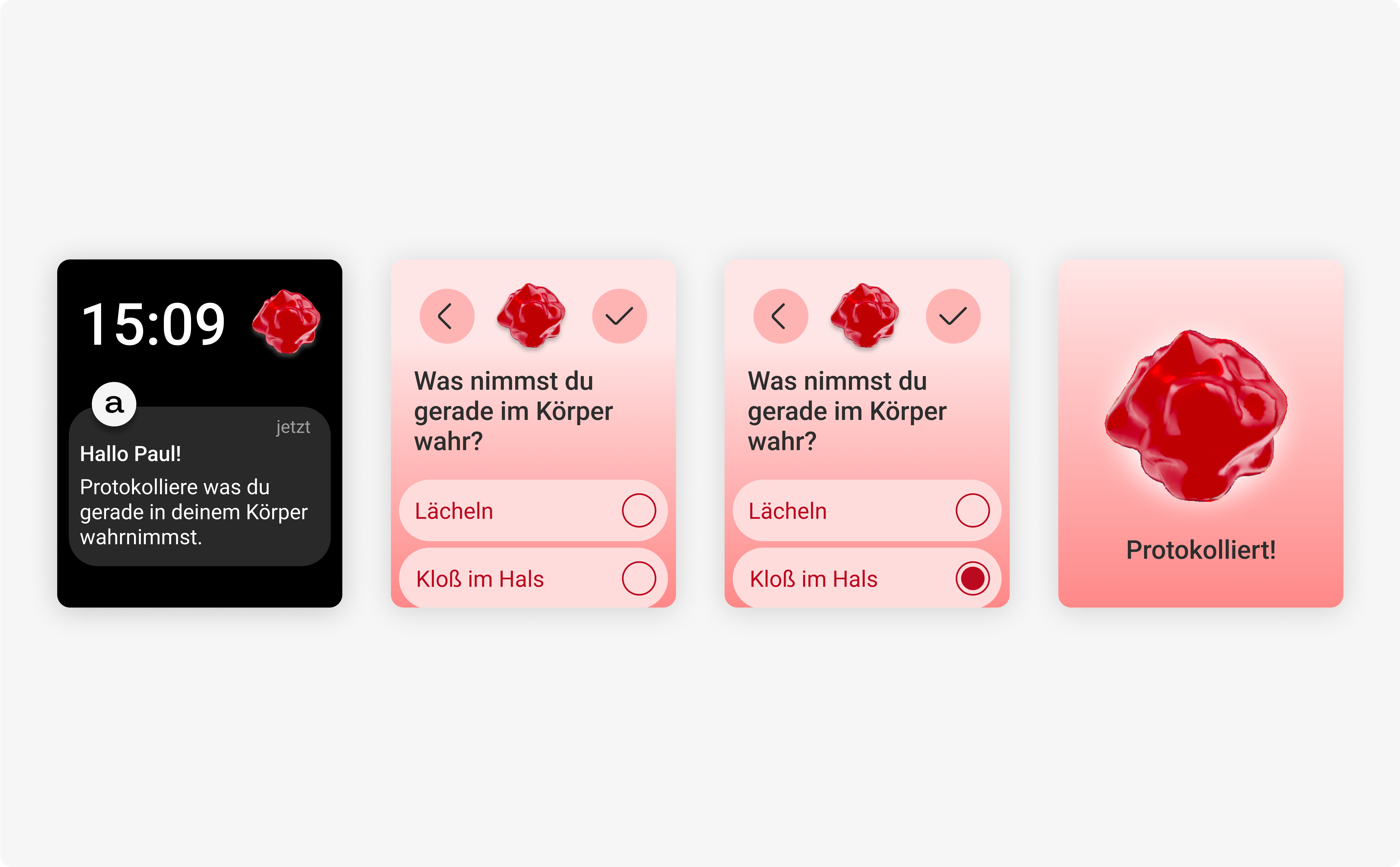
In stage 2, users also see the measured emotion and are asked to enter their physical sensations into the smartwatch themselves, which is intended to promote the conscious perception of physical signals.
(3)
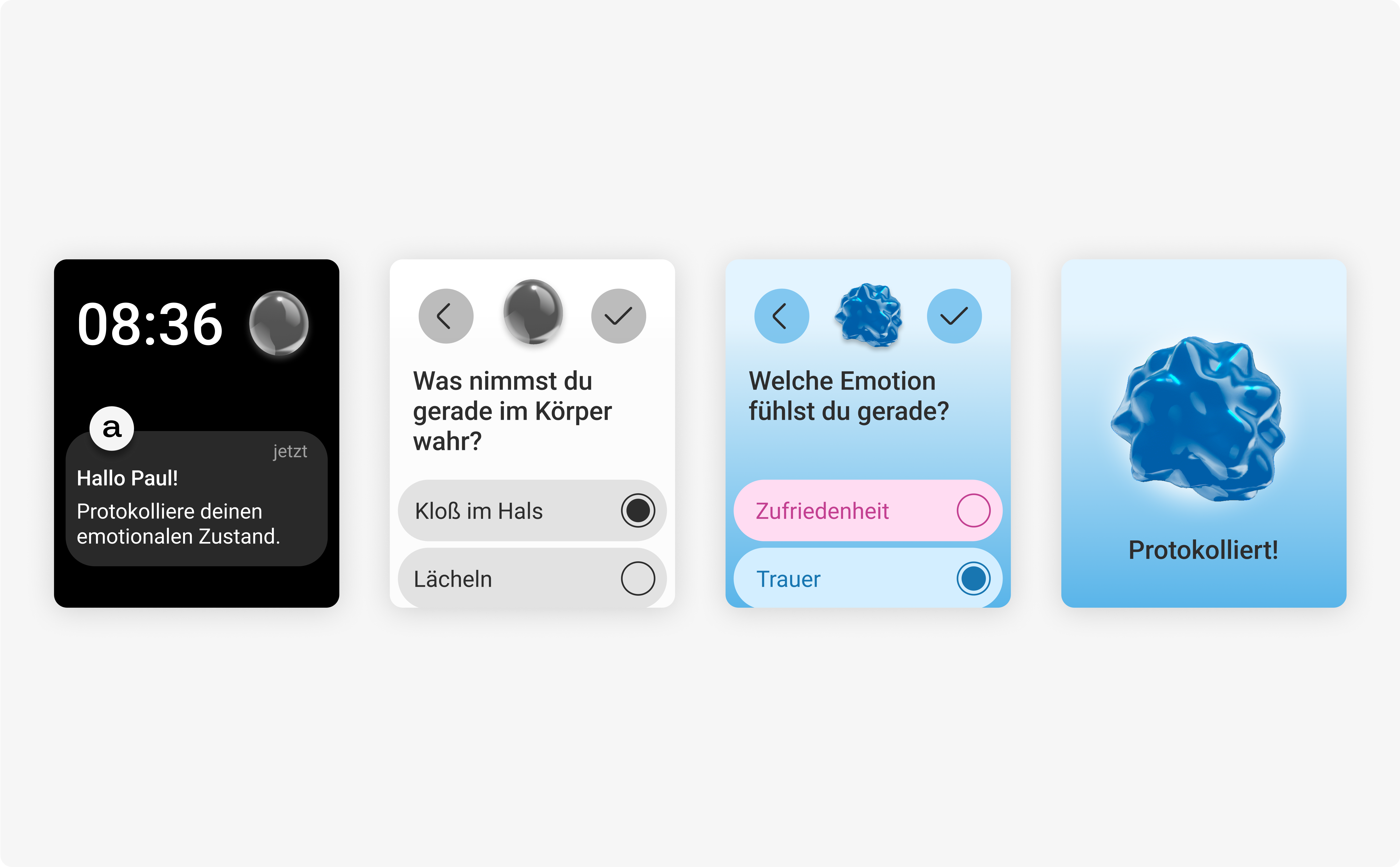
In stage 3, in addition to the physical sensations, the emotion felt itself should also be recorded, which in the long term strengthens awareness and the link between emotions and physical reactions.
The levels can be changed at any time - either according to your own feelings or with a recommendation from alex, which comes when the self-assessment remains stable over a longer period of time.
Home Screen
On the home screen of the smartphone, the user always sees the currently measured emotion, together with any physical sensations that may occur as a result, as well as the change in biophysiological values in the body, regardless of which stage they are in.
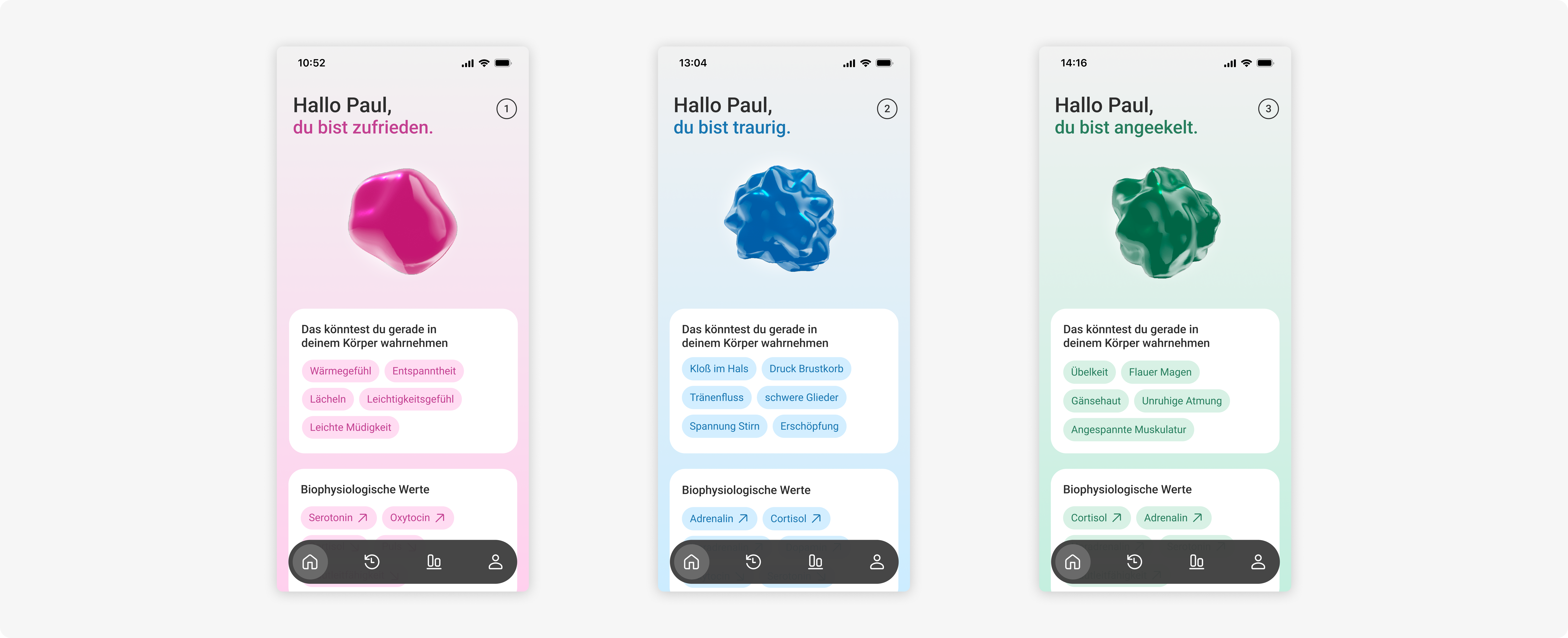
Insights Page
In the app on the smartphone, there is an Insights page for stages 2 and 3 that provides insights into the user's self-assessment. Here there are statistics and overviews that provide information about the process or progress of the self-assessment. These insights can be taken into therapy and viewed together with a therapist so that they can also gain an insight into the real emotional world of the person concerned and see where there are still difficulties in understanding their own emotions and what is already working well.
